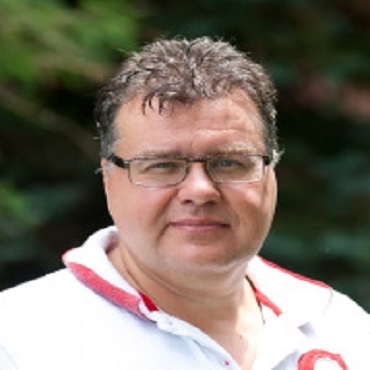Scientific Program

Evgueni Bordatchev
Senior Research Officer National Research Council of Canada, Canada
Title: Laser polishing and structuring of tooling and functional surfaces
Biography:
Evgueni Bordatchev is a Senior Research Officer and a Team Leader for Microfabrication and Surface Functionalization group at the National Research Council of Canada, in London, Ontario, Canada. He received Master, PhD, and Doctor of Technical Science degrees in electro-mechanical engineering from Don State Technical University, Rostov-on-Don, Russia, in 1982, 1989 and 1996, respectively. Since 1998, he is with National Research Council demonstrating his national and international recognition as an expert in laser- and cutting-based high-precision micromachining, surface functionalization, laser polishing, micro/nano-optics,micro-opto-electro-mechanical systems/sensors, and micro-moulds/dies. He has authored/co-authored over 280 publications, holds 6 patents, and has collaborated with researchers in Germany, United States, Taiwan, Brazil and in other countries. Evgueni Bordatchev is an Adjunct Professor at the Western University (London, Ontario, Canada) since year 2000, and he is also a member of Editorial Board for Springer’s Journal Lasers in Manufacturing and Materials Processing. Dr. Bordatchev is also a Sustaining Member of the American Society of Precision Engineering (ASPE) and a Senior Member of the Institute of Electrical and Electronics Engineering (IEEE).
Abstract
Since its inception, laser polishing (LP) technology has been receiving an increasing attention as a plausible alternative to the conventional polishing techniques. The main driver behind the development of LP technology resides in the fact that >40% of the tooling cost is associated with high-cost and time-consuming manual polishing. By contrast, LP can significantly reduce these costs by the high level of automation and the precision provided through its coupling with CNC technology. Considering its potential applications in automotive, aerospace and biomedical industries, the Automotive Portfolio of the National Research Council (NRC), Canada has been actively engaged in the development of LP technology. Building on this activity, the main objective of the present report is to introduce some of the achievements and developments of LP technology at NRC over the past five years. This presentation will focus on detail description of the laser-based  polishing and surface functionalization processes, their advantages and disadvantages with respect to the conventical abrasive polishing techniques, and examples of LP process technical implementations along with examples of LPed parts and functional surfaces, e.g. for controlled wettability, friction, adhesion, drag, and hydro-/aerodynamics. Then common understanding the process physics, process classification and its variants, material and surface characterization, and modeling capability will be presented. In addition, effect of most critical process parameters, laser type and characteristics, laser path trajectory, and process planning methodologies on achieved surface quality and physical-mechanical characteristics, e.g. gloss, micro-hardness, metallographic structures, corrosion resistance and others. Along these lines, a statistical digital twin of the laser micro-polishing process will be introduced as a thermodynamic transfer function with associated thermophysical model of the rapid melting-solidification of H13 tool steel as induced by continuous wave laser irradiation. In addition, the multi-process laser melting-based processing system will be analyzed from the perspective of Industry 4.0 integration. This avenue will be explored to better understand the possibility to couple the statistical digital twin of the LP process with the existing built-in sensing capabilities of the laser processing system (e.g. high-speed thermographic imaging), an effort regarded as the stepping stone towards the future additions of artificial intelligence, machine learning, multi-objective optimization, predictive control, and other aspects of smart manufacturing. Special attention will be placed on technical applications of the LP process in manufacturing tooling, molds and dies, medical implants, additive manufactured parts, optics, and others. The presentation will conclude with techno-economic analysis of the LP implementation, an outlook on the future of the technology, and technical and knowledge gaps that still need to be filled.
- Laser & Optics
- Advanced Laser Processing
- Advanced Optical and Magnetic Material
- Advanced Materials & Functional Devices
- Micro patterning and Nano processing
- Gas, solid and diode laser
- Beam delivery system
- Micro and remote welding
- Laser detectors
- Laser device in Medical
- Industrial application of Laser
- Laser Safety and environmental aspects
- Advancement in Nanomaterials Science & Nanotechnology

